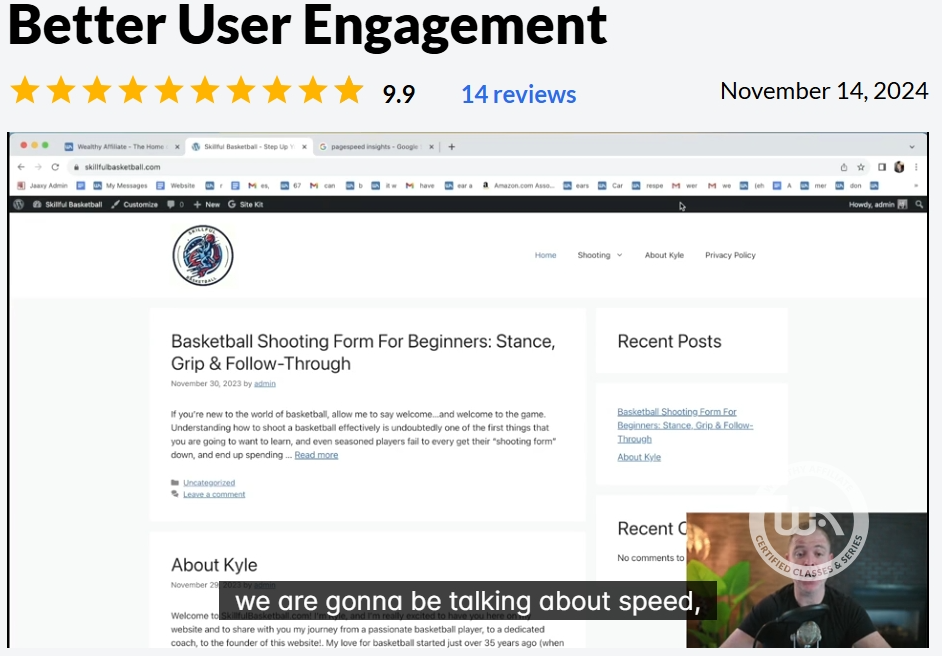Advanced Web Design insights
Web design is a complex and evolving field that requires both creativity and technical skills. There are many factors that can affect the success of your website, such as usability, accessibility, aesthetics, content, and performance. To help you improve your web design, here are some strategies that you can consider:
Have a plan: Before you start designing your website, you should have a clear idea of what your goals are, who your target audience is, and what actions you want them to take on your site. You should also map out the user journey and the structure of your site so that you can create a logical and intuitive navigation.
Keep your homepage minimalistic: Your homepage is the first impression that your visitors get of your site, so you want to make it clear and engaging. You should avoid cluttering your homepage with too much information or unnecessary elements, and instead focus on conveying your core message and value proposition. You can use headings, subheadings, bullet points, and images to break up the text and highlight the key points.
Add social proof: Social proof is the phenomenon where people tend to follow the actions or opinions of others, especially when they are uncertain or unfamiliar with something. You can use social proof to increase the credibility and trustworthiness of your site by displaying testimonials, reviews, ratings, awards, logos, or statistics from your customers or partners.
Establish your goals: Every page on your website should have a specific purpose and a clear call to action. You should define what you want your visitors to do on each page, such as signing up for a newsletter, downloading a free ebook, or making a purchase. You should also make sure that your calls to action are visible, compelling, and easy to follow.
Use the right stock images: Images can enhance the visual appeal and the message of your website, but they can also have a negative impact if they are low-quality, irrelevant, or generic. You should choose stock images that are high-resolution, relevant to your content, and reflect your brand identity and tone. You should also optimize your images for web performance by compressing them and using the appropriate format.
Make your site easy to navigate: Navigation is one of the most important aspects of web design, as it affects how users find and access the information they need on your site. You should design your navigation in a way that is consistent, intuitive, and user-friendly. You should also use descriptive labels for your menu items, avoid using too many levels of submenus, and provide a search function for larger sites.
Mobile optimization is a must: More and more people are using mobile devices to browse the web, so you need to make sure that your website is responsive and adaptable to different screen sizes and orientations. You should also consider the user experience on mobile devices, such as the touch interface, the loading speed, and the readability of the text.
Use White Space. Negative space is the vacant space between the texts, graphics, and other items on the page, whereas positive space is the area where all the contents of your website are housed.
Negative space, as depressing as the concept may be, is crucial because it creates a breathing area that makes your site legible, relatable, and attractive.
Make sure there are lots of spaces between the header and your content, between the sidebar and the main content page, and between your paragraphs, lines of text, etc. when developing your website or giving a web design business a brief.
By removing any distractions from your page and leaving enough of white space, you may significantly increase conversions on your website.

Be mindful of SEO
The method of preparing (making ready) your web pages for display on the natural search results is known as search engine optimization (SEO).
Once your website is correctly optimized, SEO by itself can increase your business’ conversion rate by up to 14.6%.
These are some of the web design strategies that can help you create a more impactful website. Of course, there are many more aspects of web design that you can explore and learn from various sources.
For instance, Google is a potent search engine that trawls the whole web in search of brand-new pages and engaging information. You must look past the homepage because Google does not rank websites but rather web pages.
Your internal pages are crucial and have to be SEO-optimized as well. If your business sells footwear, your services and product pages must target a certain set of keywords. Being relevant in SEO is preferable to being original. In other words, avoid using esoteric phrases that are not commonly used.
Advanced Web Design
When it comes to advanced web design strategies, there are several key aspects to consider in order to optimize website performance, accessibility, and security while addressing challenges like cross-browser compatibility and providing a superior user experience.
Performance:
To ensure optimal website speed and performance, techniques such as minifying CSS and JavaScript files, compressing images, leveraging browser caching, and using Content Delivery Networks (CDN) can be employed. Additionally, adopting responsive design principles and optimizing server response time will contribute to a smooth and efficient user experience.
Accessibility:
Making your website accessible for all users, including those with disabilities, is crucial. This can involve implementing proper structural markup, using appropriate alt text for images, ensuring keyboard navigation capabilities, and providing captions or transcripts for multimedia content. By following accessibility guidelines such as WCAG (Web Content Accessibility Guidelines), you can create an inclusive digital environment.
Security:
Protecting your website and its users is paramount. Employing secure coding practices, using HTTPS protocols, and keeping all software and plugins up to date are crucial steps. Regular vulnerability assessments, strong password practices, and incorporating multi-factor authentication also help enhance security levels.
Cross-Browser Compatibility:
With the wide variety of browsers and versions available, ensuring cross-browser compatibility is vital. Designing and testing websites on different browsers, utilizing tools such as CSS vendor prefixes and polyfills, and employing progressive enhancement techniques will help ensure a consistent experience across various platforms.
Superior User Experience:
A great user experience involves intuitive navigation, clean and engaging design, fast loading times, and meaningful content. Employing techniques like responsive design, focused user flows, and A/B testing will help refine the user experience and create an enjoyable browsing journey.
Conclusion
By combining these advanced strategies, you can optimize your website’s performance, accessibility, and security, while addressing the challenges of cross-browser compatibility. Remember, designing with the end user in mind is key to creating an exceptional and delightful online experience.
Steve

Some links on this site may be affiliate links, and if you purchase something through these links, I will make a commission on them.
There will be no extra cost to you and, you could actually save money. Read our full affiliate disclosure here.

